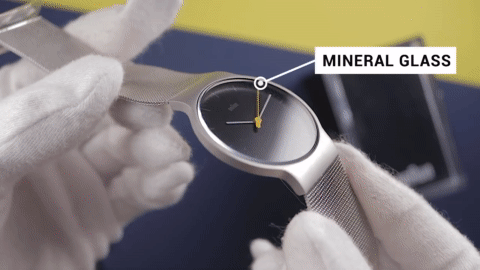5 Obvious Signs You Have a Cheap Watch | Simple Watch Buying Tips
I’ve had a few people wanting to know how to spot a cheap watch. I’m assuming in the attempt to decide whether a particular watch is worth the money or not. So, in this post I’m going to give you my watch analysing strategies, so you can make better decisions when buying watches.
I’m going to interpret a ‘cheap watch’ as a watch that is considered bad quality compared to the retail price. Usually, these are watches that have a gigantic mark-up from their real production costs. For the sake of this article and to give us some point of reference, we’ll say you have a budget of about £200.
The more of these 5 points the watch hits, the more likely it is that you have a cheap watch on your hands. Even some of the best brands will have one or two of these, but if the watch has 4 or 5, it’s likely not worth buying.
Low Tier Movement
The movement is the mechanism that is powering the watch. Most watches under the £200 use some form of battery powered quartz movement. These are the watches that tick once per second. These quartz movements really vary in terms of quality and retail price.
If the watch features some form of unnamed quartz movement, maybe the brand isn’t willing to say, it’s probably some form of generic mass-produced Chinese movement. These are often of the very lowest quality possible. These have a tendency to break down rather quickly and sometimes have a particularly loud tick that is audible from a distance. These movements can retail for as low as a few pence, so are a popular choice for brands looking to cut as many costs as possible.
Alternatively, lots of brands these days opt for the more marketable ‘Japanese quartz movement’. These are often advertised as a key selling point, as if this were a sign of high quality. Most of these movements, usually produced by Miyota, are only marginally better than their Chinese made counterparts; with the second hands of watches still rarely hitting the second markers. If the brand is still ramming these movements in watches over £100, especially approaching £200, then it’s a bad decision.
If there’s a movement you’re unfamiliar with, the great thing is you can simply just search their retail price on Google. You can usually see how much they are to buy individually, and it’s safe to assume these brands can get them for even less when purchased in bulk. If they’re charging you £200 for a watch with a £3 movement, maybe it’s not worth it.
Better value watches could have a more expensive and reliable Swiss quartz movement inside, or in some cases mechanical movements. These cost much more to produce and require far more craftsmanship to produce. They also give the watches a smooth, sweeping second hand and often contain a glass exhibition case-back, allowing you to see the beautiful movement within.
Generic Design
Something else that’s surprisingly easy to check is the design of the watch. A lot of the watches you’ll come into contact with these days have completely generic designs that have either been lazily ripped from other brands or are ordered from Chinese wholesalers. This is especially worth analysing when it comes to brands you’ve never heard of.
Larger brands, like Casio or Seiko have an in-house design team, which is why their watches often look so unique. Any watches looking the same as these are probably copies. Lots of start-up brands don’t have the budget for proper designers and cheapen out instead.
It’s worth quickly searching Chinese wholesale sites like Aliexpress or Alibaba, to see if that exact design is already out there. If the watch you’re considering reappears on these sites, it’s likely that’s where they’re being shipped from. This is a major sign that the watch is low quality and you’re probably overpaying.
Poor Quality Leather
Admittedly, this is probably lower on the scale of importance, however, it’s always frustrating when you get a bad strap with your watch. If you’re not familiar with leather products, it can be difficult to initially judge how good or bad a strap is. Here’s a couple of things to look out for.
Cheap straps tend to suffer from substantial folding, even with very little usage. In the worst cases, the top layer of the leather may even start to peel off. You may also see references to certain ‘grades’ of leather. This gives some sort of indication of what part of the hide is used in the construction of the strap. ‘Genuine leather’ is a really low tier of leather, often used by fashion brands like Daniel Wellington. Admittedly, I have reviewed some genuine leather straps that have been good quality, although many of them are terrible and look ruined after a few wears.
If a brand is willing to step up to something like top grain leather or full grain leather, then chances are the strap is probably quite decent. This is an indication the brand isn’t skimping on materials. Nevertheless, some good watches do come with bad straps, though it’s another factor to be aware of.
Flat Mineral Glass
The go-to choose for cheap watches these days is mineral glass. In some cases, on the super cheap end, for example, watches you may see in fashion stores and supermarkets, brands may opt for plastic (aka acrylic). However, as with movements, lots of brands are opting for a tier above, to try and use them as a selling point; often advertising them as luxury features.
Mineral glass is a step above plastic and does offer some limited scratch protection. Nevertheless, it’s super cheap to purchase these online and in my opinion doesn’t add much to the appeal of a watch.
Domed mineral glass, as found on some affordable watches, does require more effort to create and costs more to produce. As such, I like to treat that a bit differently. I don’t mind that stuff and I think it looks great.
Some watch brands offer sapphire glass on watches for well under the £200 mark. This is significantly more scratch resistant than mineral glass and is practically impossible to damage. For most people, this is what you’re going to want. This glass costs more to put into your watch, yet isn’t exactly expensive, so I like it when brands place this into the watch.
Not a Dedicated Watch Brand/No Brand Heritage
A red flag for me is when a watch is from a brand that doesn’t normally make wristwatches. Either that or it’s from a brand that has very little history or reputation of making good watches.
This is something to bear in mind, especially if you’re newer to wristwatches. It’s probably worth going for brands that specialise in watches and stick to brands you know have a good reputation. While there are some good microbrands out there, there are a lot of obscure brands producing terrible quality watches, marketed as ‘premium quality’.
From the consumers perspective, in many cases larger, heritage brands have much bigger manufacturing infrastructures in place; meaning they can usually offer better quality goods for lower prices than smaller brands. This is especially true when dealing with a brand that you might otherwise trust with clothing. I’ve seen a bunch of awful watches hanging up in places like River Island and Burton – it’s because these brands just ship in generic Chinese watches and whack their packaging on them; they’re not really making any watches themselves.






